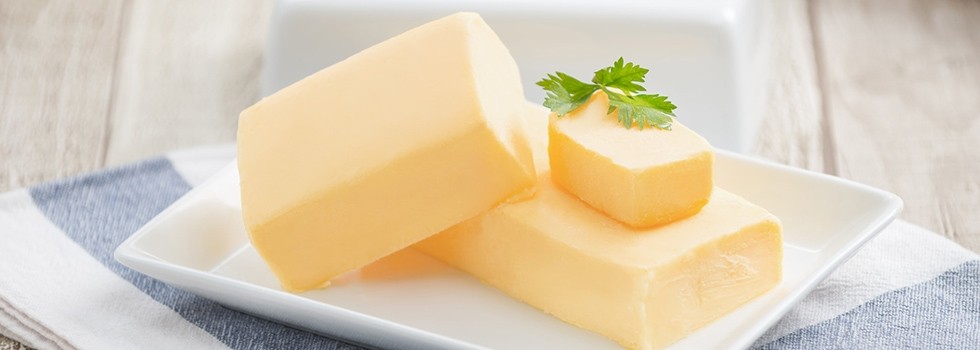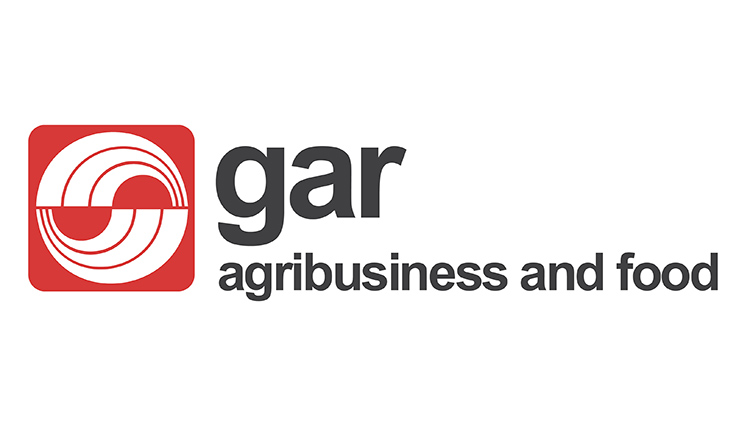Promotional Features
Why palm oil is a go-to option for reformulation projects
Food manufacturers are constantly subject to reformulation challenges and opportunities. From the requirement to remove industrial trans fats through to pressures to control costs, there is always a need to change product formulations without negatively affecting sensory properties. In the hands of formulators such as Golden Agri-Resources (GAR), highly versatile palm oil can meet many of those needs.
Public health officials have spent decades and considerable resources trying to get people to change their diets to improve health outcomes with mixed results.1 The persistent gap between what public health officials recommend people eat and the actual diets of consumers, has created interest in the reformulation of products to facilitate "health by stealth." 2,3
The history of trans fats illustrates the power of reformulation. Manufacturers took steps to remove these industrial lipids from foods in response to health concerns that led the US to impose labelling requirements in 2006. The reformulation efforts were highly successful. A decade after those requirements took effect, setting a target of less than 2 percent of food energy from trans fatty acids, people aged 65 years and older in the UK were getting 0.5 to 0.7 percent of their food energy from trans fatty acids, depending on their age and gender.4 Intake in the UK fell significantly in all ages from 2008 to 2017.5
Palm oil has contributed significantly to nutrition in food products. Three decades ago, a few global food manufacturers recognised the negative impacts of industrial trans fats and worked to remove them from their brands. For example, in the early 1990s, Unilever decided to remove trans fatty acids from spreads and other foods.6 Palm oil played a fundamental role in ensuring a successful transition to producing food without industrial trans fats. Since the middle of the '00s, many countries started following WHO's guidance to mitigate industrial trans fatty acids. Simultaneously, came the genetic modification of soybean oil, triggering an increase in demand for more natural oils. Today, palm oil is still the only non-GMO, natural, edible vegetable oil in abundant supply.
What makes palm oil different?
Palm oil facilitated the reduction in consumption of industrial trans fats in the UK and other markets. Palm oil, which is naturally free from industrial trans fats, replaced partially hydrogenated oils in many products on the Danish market after its trans fat ban.7 Similarly, palm oil supplanted partially hydrogenated oils as the main fat ingredient used in the US in the six years after the labelling requirement came into force.8
The intrinsic properties of palm oil explain its popularity in food solutions. Unlike liquid oils such as those made from soybeans and sunflowers, palm oil can be used in its natural form. It is already fully functional, not needing modifications that result in a partially or fully hydrogenated product.
Palm oil's versatility means manufacturers can bring those benefits to a wide range of foods, including chocolate, ice cream, infant formula, pastries, bread, and various products made using margarine and shortenings. Its versatility reflects the diversity of substances captured under the term "palm oil." The palm fruit provides two kinds of oil, one from the flesh, another from the kernel. Both oils can then be fractionated by a natural process to create multiple palm oil ingredients with other properties; either more liquid, containing unsaturated oil or more solid, containing saturated oil.
Oil from the fleshy parts of the fruit is rich in beta-carotene and tocotrienols, molecules linked to a wide range of positive medical and protective properties.9,10 The kernel yields oil that is very similar to coconut oil in terms of fatty acid composition. Kernel oil is rich in short and medium-chain fatty acids, making it a popular choice with manufacturers of infant formula and sports nutrition products. It also has the fast-melting properties sought after by companies seeking alternatives to cocoa butter.
Fractionating the oils creates specific features, enabling manufacturers to select the ideal nutritional profile and other characteristics for particular products. For example, fractionation can create an oil with similar properties to olive oil for manufacturers that need a substance rich in monounsaturated fatty acids. Each specific palm fraction also has a unique texture, to enhance structure to the particular food.
Using palm oil to solve formulation challenges
GAR has harnessed palm oil's versatility and properties to create formulations that address the needs of its customers. In one project, a global chocolate provider needed a milk fat replacer for the Japanese market. At one time, the chocolate provider would have been able to choose from a range of vegetable oils, but the harm caused by industrial trans fats had limited the company's options.
Working with GAR, the provider adopted a palm oil-based solution. The solution was cheaper than existing options while simultaneously being naturally free from industrial trans fats. Simultaneously, the palm oil delivered all of the consistency, stability and nutritional benefits that can drive manufacturers to incorporate replacements for milk fats into their products. Manufacturers of cookies, toffees, pastry and other products can realise similar benefits by using vegetable palm oil as a milk fat replacer. Meaning palm oil offers an easy solution for plant-based alternatives.
GAR's work with international chefs at high-end hotels in Jakarta shows the potential of palm oil in pastries such as croissants. Traditionally, butter is seen as essential for croissants, with recipes featuring two parts butter per three parts flour.11 French people went without croissants rather than use margarine as a substitute during the shortages of 2017.12
The hotel chefs initially saw butter as integral to croissants, too. However, GAR recreated the chefs' croissants, delivering the desired flaky texture and buttery flavour using palm oil-based margarine. Just as adding sugar beyond a certain point does not make coffee taste any sweeter, GAR demonstrated that the functionality of butter could be achieved, with little to none of the dairy product.
Replacing butter with plant-based palm oil has benefits for food manufacturers and consumers, such as reducing their exposure to an ingredient high in cholesterol and subject to significant price fluctuations. UK wholesale butter prices increased 78% in six months in 2017.13
How GAR supports customers
GAR's successful reformulations of the chocolate and croissant products were underpinned by the investments it has made in R&D. To support formulation development; GAR created a fully equipped test kitchen, chocolate and sensory evaluation lab. GAR researchers use the capabilities to recreate customer products using palm oil, thereby validating substitution's viability on a small scale. Flavour simplification, emulsifier optimisation and industrial trans fat removal are all possible.
Using specialised pilot scale plant equipment for products including margarine, chocolate and dairy, GAR assesses the new formulations on factory equipment and, in doing so, ensures a smooth scale-up to commercial production. GAR's R&D team also specialises in packaging development, to offer packaging simplification to maximise cargo loading and reduce carbon footprints.
To anticipate customer requirements, GAR closely monitors public health regulations around the world. For example, it has engaged with public health officials in China and India, two of its biggest markets. It also joined several local and regional industry organisations to stay abreast of food science and nutrition trends. In light of the COVID 19 outbreak, GAR expects customers, driven by consumer demand, to increase their demands for nutritious, safe, and sustainably produced ingredients.
These capabilities make GAR more than an ingredient supplier; it is an expert partner for formulation projects. Food manufacturers will need such partners in the years to come. Reformulation challenges and opportunities will continue to arise as public health officials pursue changes predicted to avoid 1.1 million cases of cardiovascular diseases, diabetes and cancer annually and manufacturers look for ways to deliver healthier, better-tasting products for less money.14
Partnering with GAR enables food manufacturers to leverage palm oil's versatility to meet their formulation challenges and opportunities. Customers also benefit from investments the company has made in plantation-level traceability. In GAR's hands, palm oil is a sustainable and trans fat-free option that manufacturers can use to retain sensory properties while improving nutrition and reducing costs.
References
1. Interventions on Diet and Physical Activity: What Works. https://apps.who.int/iris/bitstream/handle/10665/44140/9789241598248_eng.pdf;jsessionid=EEDBB5913B5CFF0F8667BBB4A47F57CA?sequence=1.
2. Muth, M. K., Karns, S. A., Mancino, L. & Todd, J. E. How Much Can Product Reformulation Improve Diet Quality in Households with Children and Adolescents? Nutrients 11, (2019).
3. Buttriss, J. L. Why food reformulation and innovation are key to a healthier and more sustainable diet. Nutr. Bull. 45, 244–252 (2020).
4. Public Health England. NDNS: results from years 7 and 8 (combined). (2018).
5. Public Health England. NDNS: time trend and income analyses for Years 1 to 9. (2019).
6. The Elimination of Trans Fats from Spreads: How Science Helped to Turn an Industry around, Onno Korver and Martijn B. Katan (2006).
7. Bysted, A., Mikkelsen, A. A. & Leth, T. Substitution of trans fatty acids in foods on the Danish market. Eur. J. Lipid Sci. Technol. 111, 574–583 (2009).
8. Hooker, N. & Downs, S. Trans-Border Reformulation: US and Canadian Experiences with trans Fat. International Food and Agribusiness Management Review 17, 1–16 (2014).
9. Sayahi, M. & Shirali, S. The Antidiabetic and Antioxidant Effects of Carotenoids: A Review. Asian Journal of Pharmaceutical Research and Health Care 9, 186–191 (2017).
10. Georgousopoulou, E. N., Panagiotakos, D. B., Mellor, D. D. & Naumovski, N. Tocotrienols, health and ageing: A systematic review. Maturitas 95, 55–60 (2017).
11. French croissants. https://gourmetier.com/french-croissants/.
12. O'Brien, C. France's butter crisis is a perfect lesson in basic economics. https://qz.com/1139650/frances-butter-crisis-is-a-perfect-lesson-in-basic-economics/.
13. UK wholesale prices. https://ahdb.org.uk/dairy/uk-wholesale-prices.
14. Vuik, S., Lerouge, A., Guillemette, Y., Feigl, A. & Aldea, A. The Heavy Burden of Obesity: The Economics of Prevention. The Heavy Burden of Obesity (2019) doi:10.1787/2074319x.



